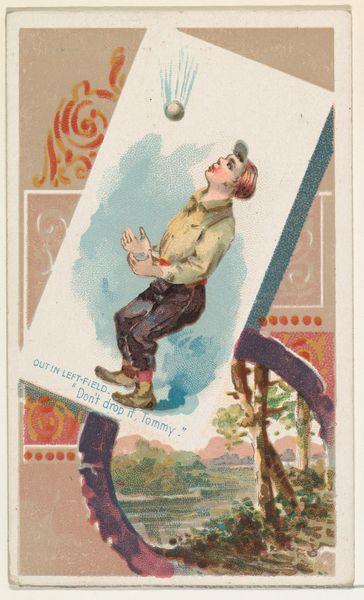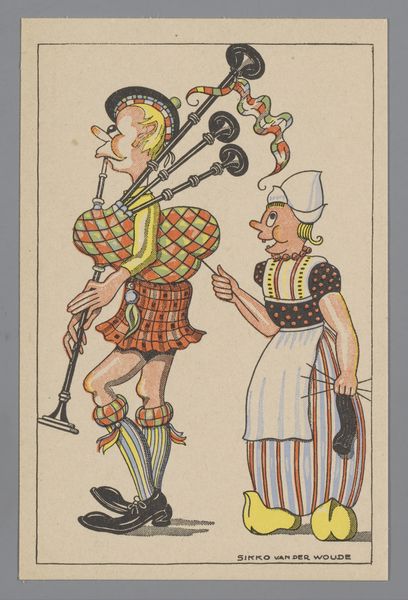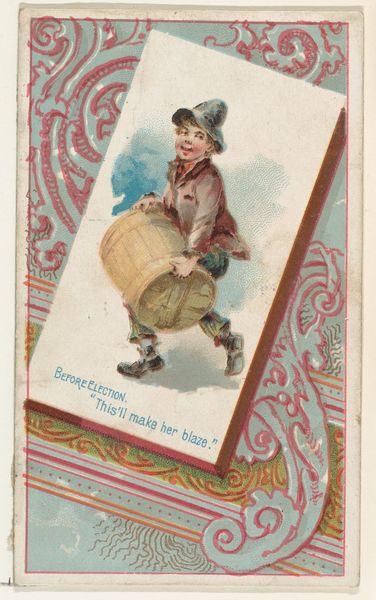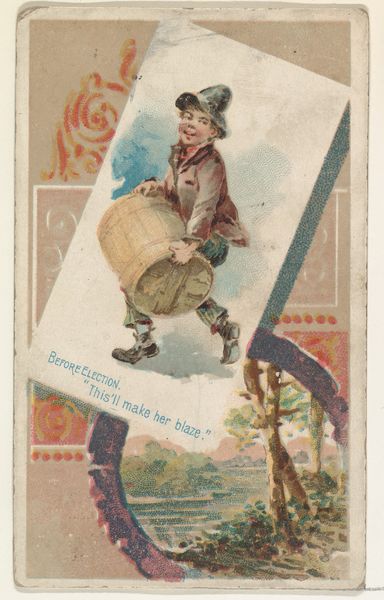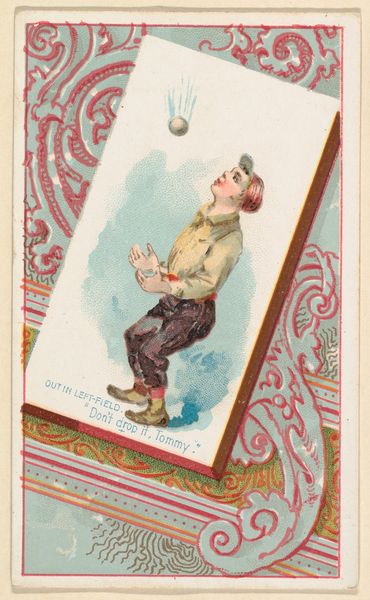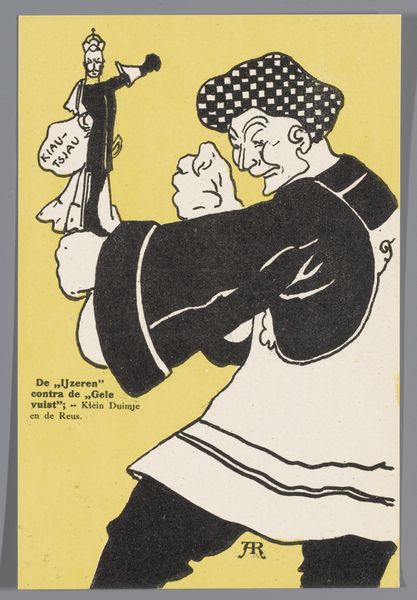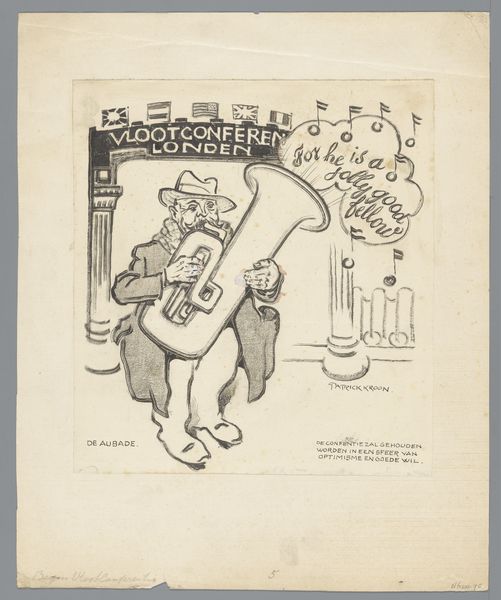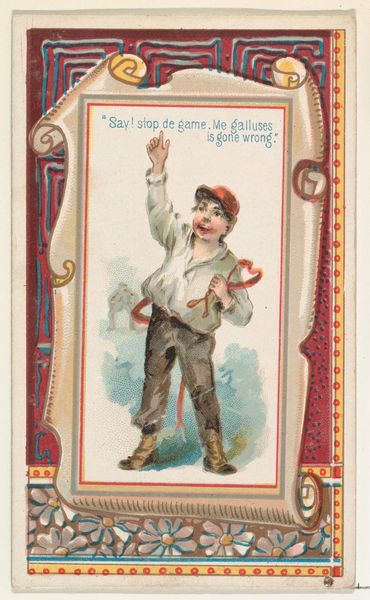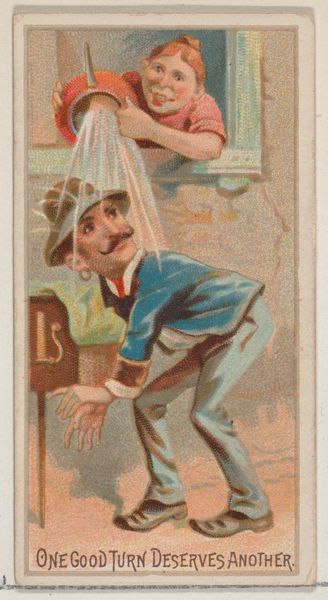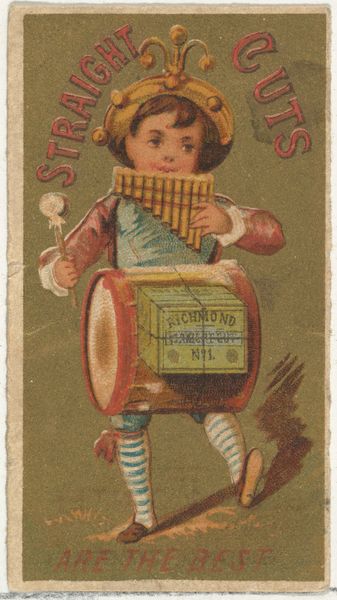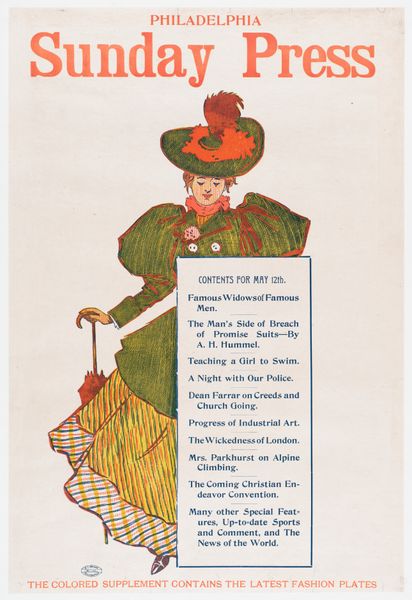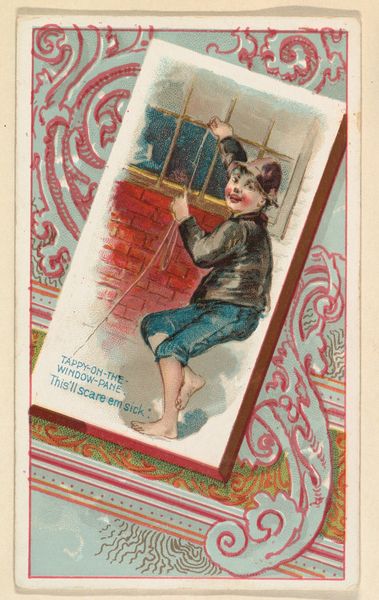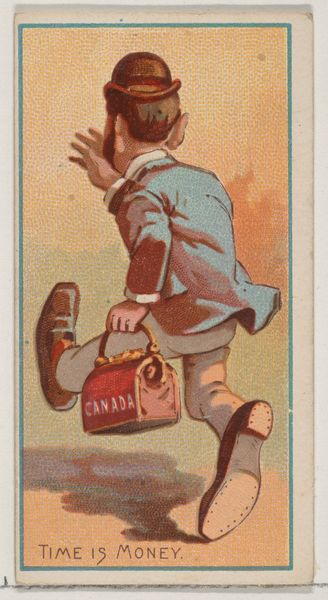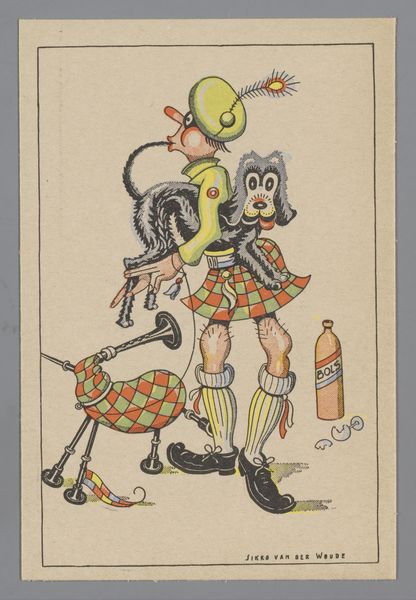
painting, print
#
narrative-art
#
painting
# print
#
figuration
#
folk-art
#
cartoon carciture
Dimensions: height 15.3 cm, width 12.4 cm
Copyright: Rijks Museum: Open Domain
Curator: This vibrant print, titled "Picture Post Card," was created by Sikko van der Woude in 1945. The piece seems to capture a moment of jubilation following the liberation of Holland. What are your first impressions? Editor: The composition immediately strikes me as playful, almost childish. The slightly off-kilter perspective and bold, cartoonish figures suggest a simplified, perhaps idealized, representation of postwar Dutch identity. There’s an exuberance conveyed, but also a disquieting sense of forced joy given the historical context. Curator: Note how the artist uses symbolic visual markers. The accordion player is wearing traditional Dutch garb; the windmill and flags of allied forces function as signifiers of Dutch history and the end of occupation. What formal choices were made in the printmaking? Editor: Precisely. The stark outlines and flat planes of color, common in printmaking, are strategically deployed, evoking popular forms of folk art that promoted the image of a newly-liberated nation in alignment with its liberators. However, those rigid compositional constraints contribute to the stiffness in posture of the main character; a disconnect that belies the artist's stated cheer. Curator: I find that fascinating. Looking at the work, the artist's formal choices amplify this feeling of optimism. Van der Woude does use strong colors, and clearly defines space, giving a clear visual organization. The choice of media - a reproduced postcard - promotes accessibility. Editor: True, though I’d counter that its propagandistic aims arguably dilute its artistic integrity; The medium of print as a disseminator of popular ideas needs to be considered critically alongside the end goals that the work serves. Curator: An intriguing insight. So, while the formal qualities might underscore a collective moment of celebration and accessibility through prints, the underlying social context complicates our reading of this artwork. Editor: Absolutely. It compels us to question who this “cheer” is actually for, and whose voices remain unheard in this ostensibly joyful representation of “Liberated Holland.” Curator: Food for thought, indeed. It highlights how closely form and context are intertwined in shaping our understanding of art and history.
Comments
No comments
Be the first to comment and join the conversation on the ultimate creative platform.
